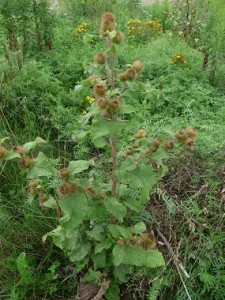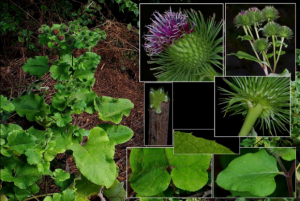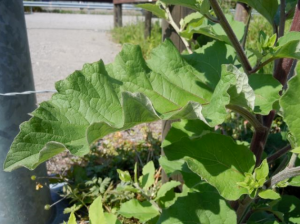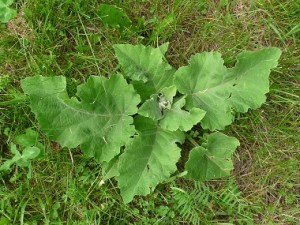Burdock (Arctium lappa)
The paragraphs below are taken straight from several locations, references below for additional reading. Who would have thought this rotten weed would be edible?
Jon
Medium to large-sized plant with big leaves and purplish thistle-like flower heads. The plant is native to the temperate areas of the Eastern Hemisphere; however, it has been naturalized in parts of the Western Hemisphere as well. Burdock is actually a popular food in Japan. You can eat the leaves and the peeled stalks of the plant either raw or boiled. The leaves have a bitter taste, so boiling them twice before eating is recommended to remove the bitterness. The root of the plant can also be peeled, boiled, and eaten.
Recognized mainly for its burrs, burdock is an interesting biennial plant because it consists primarily of carbohydrates, volatile oils, plant sterols, tannins, and fatty oils. Researchers aren’t sure which active ingredients in burdock root are responsible for its healing properties, but this plant may have anti-inflammatory and antibacterial effects. In fact, recent studies show that burdock contains phenolic acids, quercetin and luteolin – all are powerful antioxidants. Burdock, in its first year has no stem and grows only as a basal rosette of leaves that stays close to the ground the first year and the beginning of the second.
Burdock root, raw
Nutritional value per 100 g (3.5 oz)
Energy 302 kJ (72 kcal)
Carbohydrates 17.34 g
– Sugars 2.9
– Dietary fiber 3.3 g
Fat 0.15 g
Protein 1.53 g
Thiamine (vit. B1) 0.01 mg (1%)
Riboflavin (vit. B2) 0.03 mg (3%)
Niacin (vit. B3) 0.3 mg (2%)
Pantothenic acid (B5) 0.321 mg (6%)
Vitamin B6 0.24 mg (18%)
Folate (vit. B9) 23 μg (6%)
Vitamin C 3 mg (4%)
Vitamin E 0.38 mg (3%)
Vitamin K 1.6 μg (2%)
Calcium 41 mg (4%)
Iron 0.8 mg (6%)
Magnesium 38 mg (11%)
Manganese 0.232 mg (11%)
Phosphorus 51 mg (7%)
Potassium 308 mg (7%)
Sodium 5 mg (0%)
Zinc 0.33 mg (3%)
Distinguishing Features: Burdock is best recognized as a stout, common weed with annoying burrs that stick to animal fur and clothing. This plant grows relatively tall therefore having deep roots which are brownish green, or nearly black on the outside. The basal rosette of leaves stays close to the ground the first year and the beginning of the second. These basal rosettes can grow up to 1 metre wide
Flowers: Burdock has purple flowers on tips of prickly ball of bracts that blooms between June and October. Flower heads are 1 to 3 cm across, composed of purple disc florets surrounded by several rows of overlapping hooked bracts.
Leaves: Large, wavy, heart-shaped leaves that are green on the top and whitish on the bottom makes identifying burdock easy. Leaves can grow to 50 centimetres in size.
Height: This plant grows to a height of about 1 – 2 metres tall.
Habitat: Burdock thrives along river banks, disturbed habitats, roadsides, vacant lots, and fields. It grows throughout North America but not in the southern regions.
Edible parts: First-year roots and second-year stems can be cooked by boiling for about 20 minutes, then season to taste. Before cooking however, the stems should be peeled, and roots scrubbed in order to remove the bitter rind. Immature flower stalks may also be harvested in late spring, before flowers appear; their taste resembles that of artichoke. The Japanese have been known to eat the leaves when a plant is young and leaves are soft.
http://www.artofmanliness.com/2010/10/06/surviving-in-the-wild-19-common-edible-plants/
http://nonabrooklyn.com/foraging-brooklyn-bountiful-burdock-is-in-season-now/#.UzYFgPldWSo
http://www.ediblewildfood.com/burdock.aspx
http://en.wikipedia.org/wiki/Arctium_lappa






Leave a Reply